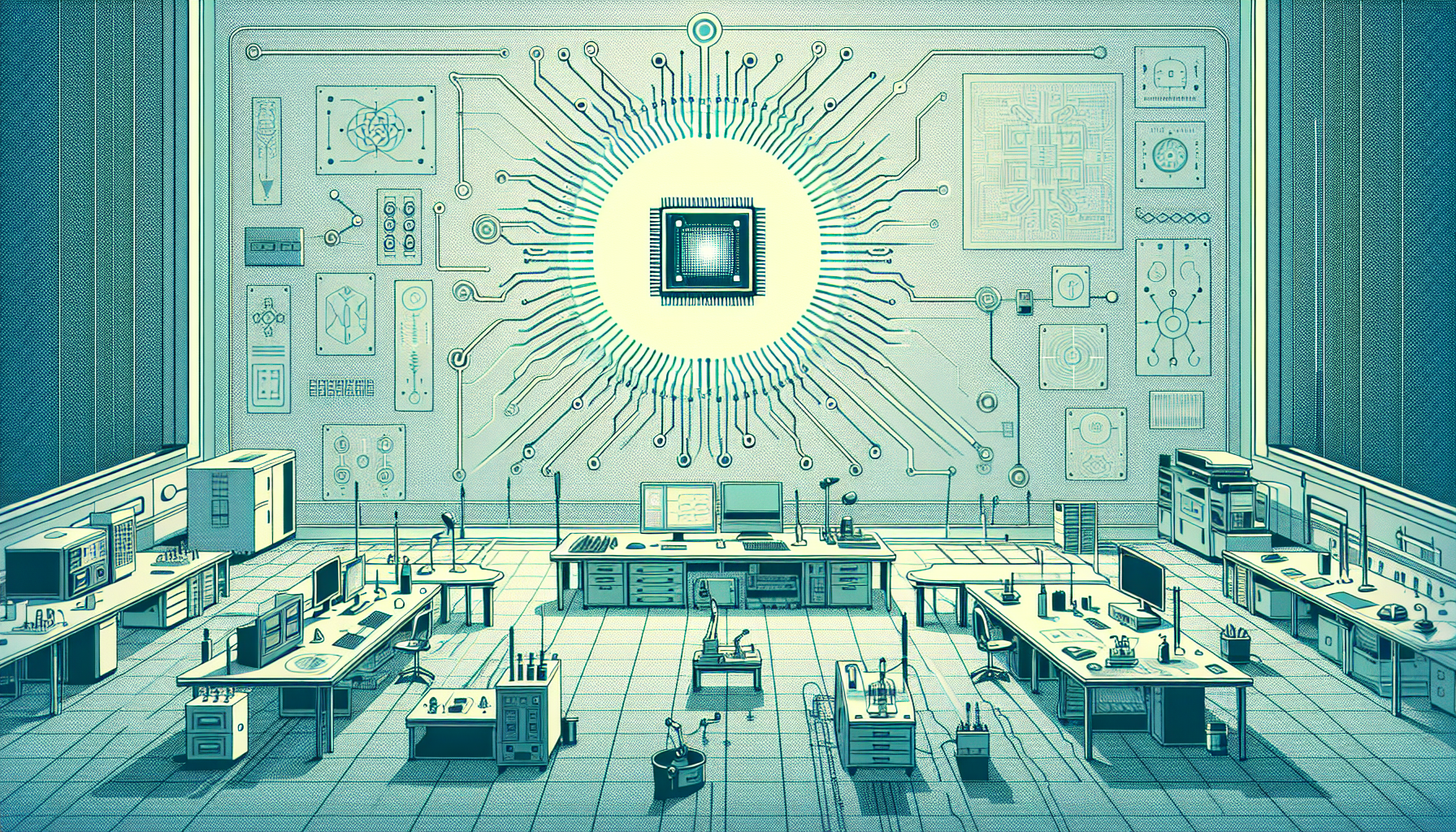In a remarkable advance for artificial intelligence (AI) and robotics, scientists from Korea’s Advanced Institute of Science and Technology (KAIST) have unveiled an ingenious neuromorphic semiconductor chip. This cutting-edge chip mimics the adaptive learning and error-correction abilities of the human brain, promising to reshape how AI tasks are processed and errors are handled.
Inspired by the Human Brain
Traditional computers handle data processing and storage separately, but the neuromorphic chip merges these functions into one. This integration is made possible by memristors, tiny components that can store information and compute at the same time. Memristors function similarly to brain synapses, enhancing the chip’s effectiveness at managing intricate AI-driven operations. This marks a departure from the limits of standard computing systems.
Distinctive Features and Innovations
The researchers at KAIST, under the guidance of Professors Shinhyun Choi and Young-Gyu Yoon, have introduced several groundbreaking features with their chip:
- Real-Time Learning and Error Correction: The chip is capable of learning and autonomously correcting errors, reaching levels of accuracy akin to the ideal computer simulations. It can, for instance, distinguish moving objects from backgrounds in video feeds, gradually improving its accuracy.
- Reliable Memristor Devices: These chips employ high-reliability memristors with self-correcting error functions, addressing challenges previously faced by typical neuromorphic devices.
- Environmental Adaptability: The chip responds to immediate changes in its environment, surpassing the adaptability of current neuromorphic technologies—crucial in scenarios needing real-time adjustments and learning.
Wide-Ranging Applications
The potential applications of this revolutionary chip are diverse and groundbreaking:
- Smart Security Cameras: With these chips, security cameras can detect unusual activities instantly without the need for remote cloud servers, elevating real-time monitoring capabilities.
- Healthcare Devices: Integrated with medical equipment, these chips can analyze health data promptly, leading to faster, more accurate diagnostics and treatments.
- Autonomous Vehicles: Neuromorphic computing enhances an autonomous vehicle’s ability to navigate, facilitating quicker course adjustments and better collision avoidance while conserving energy.
- Robotics: The chip empowers robots with advanced real-time learning and decision-making abilities, improving object recognition, environment navigation, and operational efficiency in tasks such as assembly line work.
Efficiency and Performance
One of the most notable advantages of neuromorphic computing lies in its energy efficiency. Chips like the NeuRRAM perform tasks right in memory, significantly lowering energy consumption compared to traditional computing systems. As AI technologies are anticipated to increase their energy demands sharply in the coming years, neuromorphic computing stands out as a promising solution to this growing concern.
Looking Ahead
The evolution of neuromorphic computing is set to revolutionize AI, healthcare, and robotics. We are at a critical juncture, with exciting opportunities to craft new frameworks and hardware that can be adapted for commercial use. The future of this field will largely depend on collaboration between industrial and academic spheres, as ongoing research continues to push boundaries.
In essence, the creation of this neuromorphic semiconductor chip is a decisive step in advancing AI and robotics. Its real-time learning, error correction, and energy efficiency pave the way for revolutionary real-world applications. As this technology grows, we anticipate profound improvements and solutions emerging in various industries, shaping an innovative future powered by neuromorphic intelligence.

Leave a Reply